Yarrow Infused Oil for Varicose Veins Treatment
Learn how to identify the wild edible and medicinal plant yarrow (Achillea Millefolium) and how to make a yarrow infused oil for varicose veins treatment.
Yarrow is a plant I first discovered in the mountains in North Carolina with my dear friend Laura from Rise Up Remedies. This summer, I noticed that this wild medicinal plant also happens to grow right outside my doorstep in Switzerland. In fact, this aromatic flower actually grows all over Europe, North America, Asia, and even in Australia.

Yarrow is such a versatile healing plant that we have featured it in both our Herbal Remedies course and our Zero Waste Period course (and now even our Zero Waste Body Care course!). It is used for everything from injuries, to menstrual issues, fevers, digestion, and even as spider or varicose veins treatment. This post will focus on making yarrow infused oil for varicose veins treatment only, but our courses delve much deeper into yarrow’s medicinal properties. Make sure to watch the educational video below.
WARNING: This is not your complete guide to foraging. Be mindful of contaminated sites and overharvesting. Always be 100% certain of your plant identification and inform yourself about local lookalikes. Read our Health Disclaimer.
Yarrow: Plant Identification
Yarrow (Achillea Millefolium) is a perennial plant in the Asteraceae family. It grows up to about 70cm in full-sun in prairies, clearings and meadows. In Europe, it blooms from June through October with a beautiful white or light pink inflorescence, which is a cluster of flowers. In this case, it’s actually a double inflorescence (a. + b.).
There’s the composite flower head (a.), which is made up of 2 types of aromatic florets. There are generally 4 to 5 ray florets on the outside that are whiter and fertile disc florets at the center that are creamier colored. There are about 20 or more of these flower heads arranged in a corymb (b.). A corymb is where the flower stalks start at different levels. The lower flower stalks are longer, and the higher flower stalks are shorter and they end up holding up all the flowers at the same level at the top, in a flat-topped, slightly convex cluster. A corymb is not the same thing as an umbel. The umbel shape is one you’ll find in the carrot family. With an umbel, the flower stalks start all at the same level, which is not the case with yarrow, which is in a corymb form.
The young yarrow leaves start to come up in March and April. The leaves at the base are 4 to 5 times longer than the leaves on the stem. The leaves on the stem are about 5cm long. The leaves are bipinnately compound, meaning they’re twice divided into leaflets called pinna and pinnules. This makes it appear as though there are thousands of leaves, hence the name Millefolium.
Finally, the stem is white, hairy, furrowed and very fibrous. It branches out towards the top. At the very top of each stem are compact and adjacent bracts surrounding the receptacle.
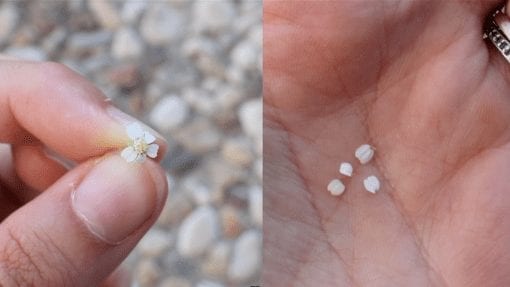
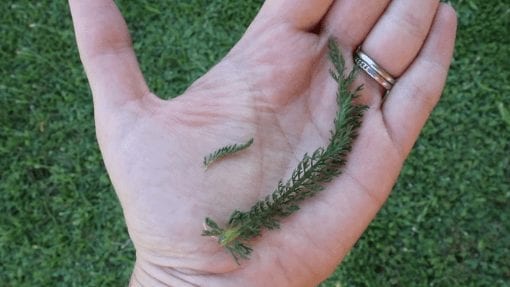
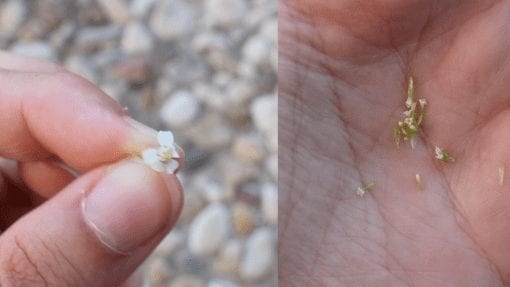
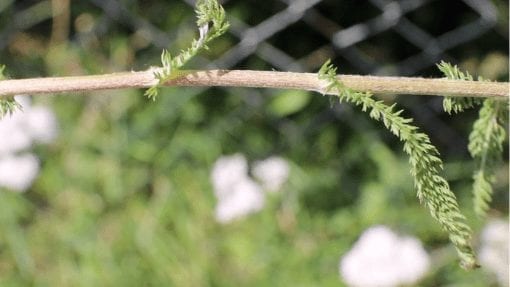
Yarrow Lookalikes
It’s possible to confuse yarrow with various plants depending on where you live. Be sure to learn about your local lookalikes. If it’s your first time foraging yarrow, wait until it’s in bloom.
There are different yarrow varieties (140 worldwide). There are yarrow cultivars that are yellow, red or pink. As long as it’s Achillea millefolium specifically, it can be used medicinally. There are some types of ornamental yarrow like Achillea filipendulina or roseo-alba that are not used in the same way medicinally, because their chemical make-up is different.
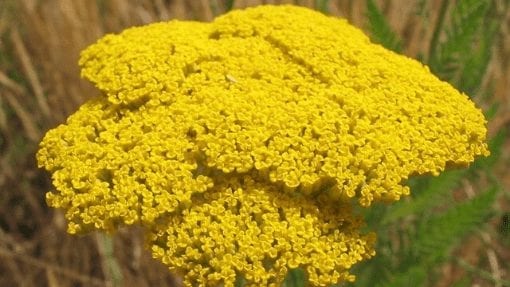
Achillea filipendulina
Credit: Pablo Alberto Salguero Quiles
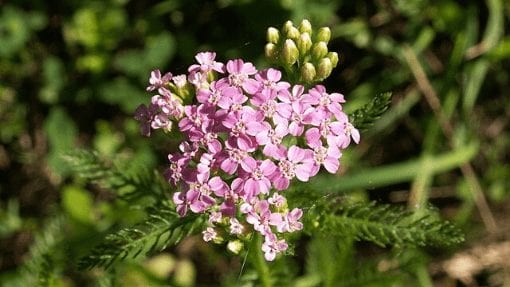
Achillea roseo-alba
Credit: Nicola Cocchia
A common lookalike is dropwort (Filipendula vulgaris) that looks similar at the young leaf stage, but if you look closely, it has small little leaflets between the larger leaflets. This isn’t the case for yarrow.
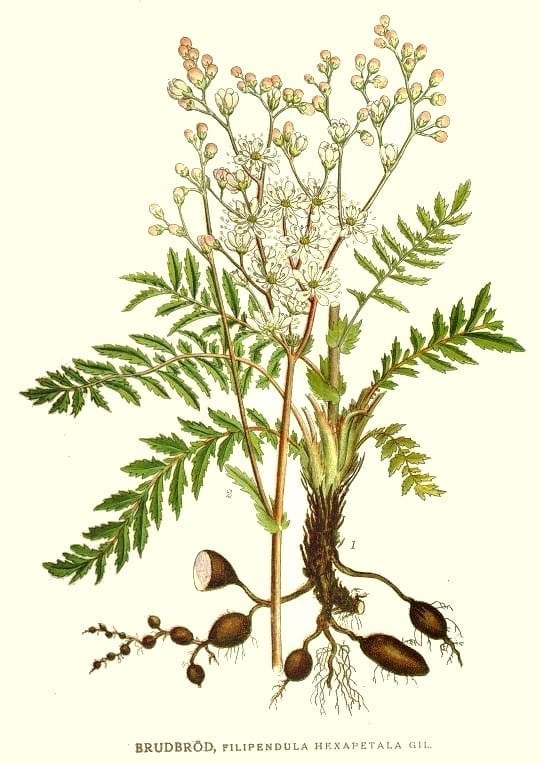
Dropwort (Filipendula vulgaris)
Credit:
German chamomile (Matricaria chamomilla) can look similar at the leaf stage.
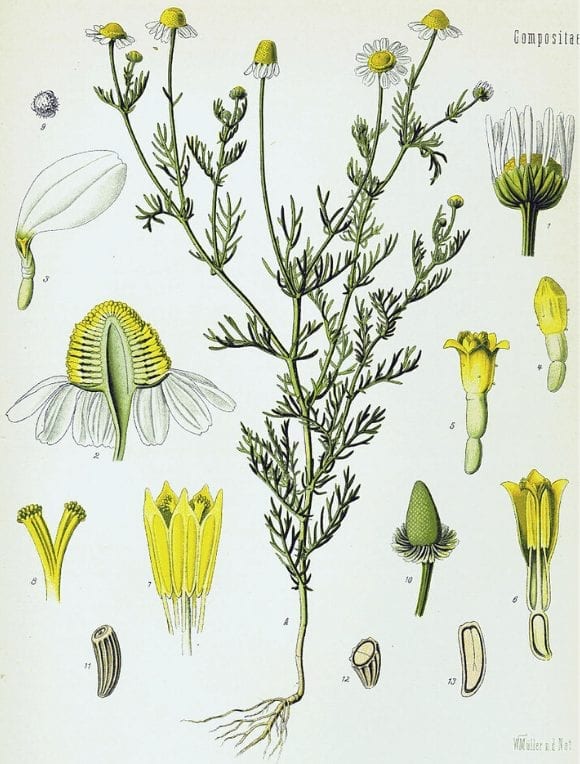
German chamomile (Matricaria chamomilla)
Credit: – List of Koehler Images
Redstem filaree (Erodium cicutarium) can also look quite similar at the leaf stage, but it’s not cut as deeply as yarrow leaves.
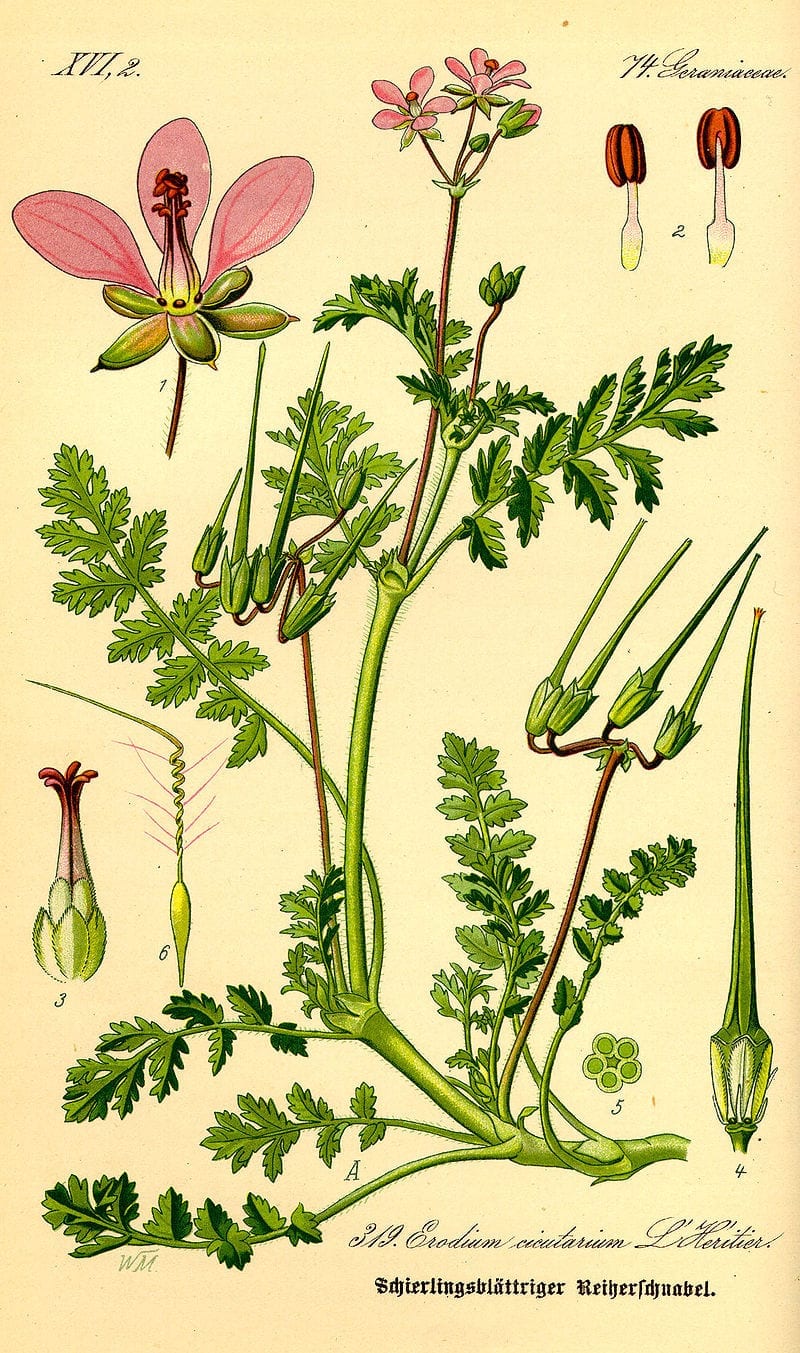
Redstem filaree (Erodium cicutarium)
Credit: Topjabot
Queen Anne’s Lace (Daucus carota) can be confused at the flowering stage. The flowers are in an umbel shape as opposed to a corymb.
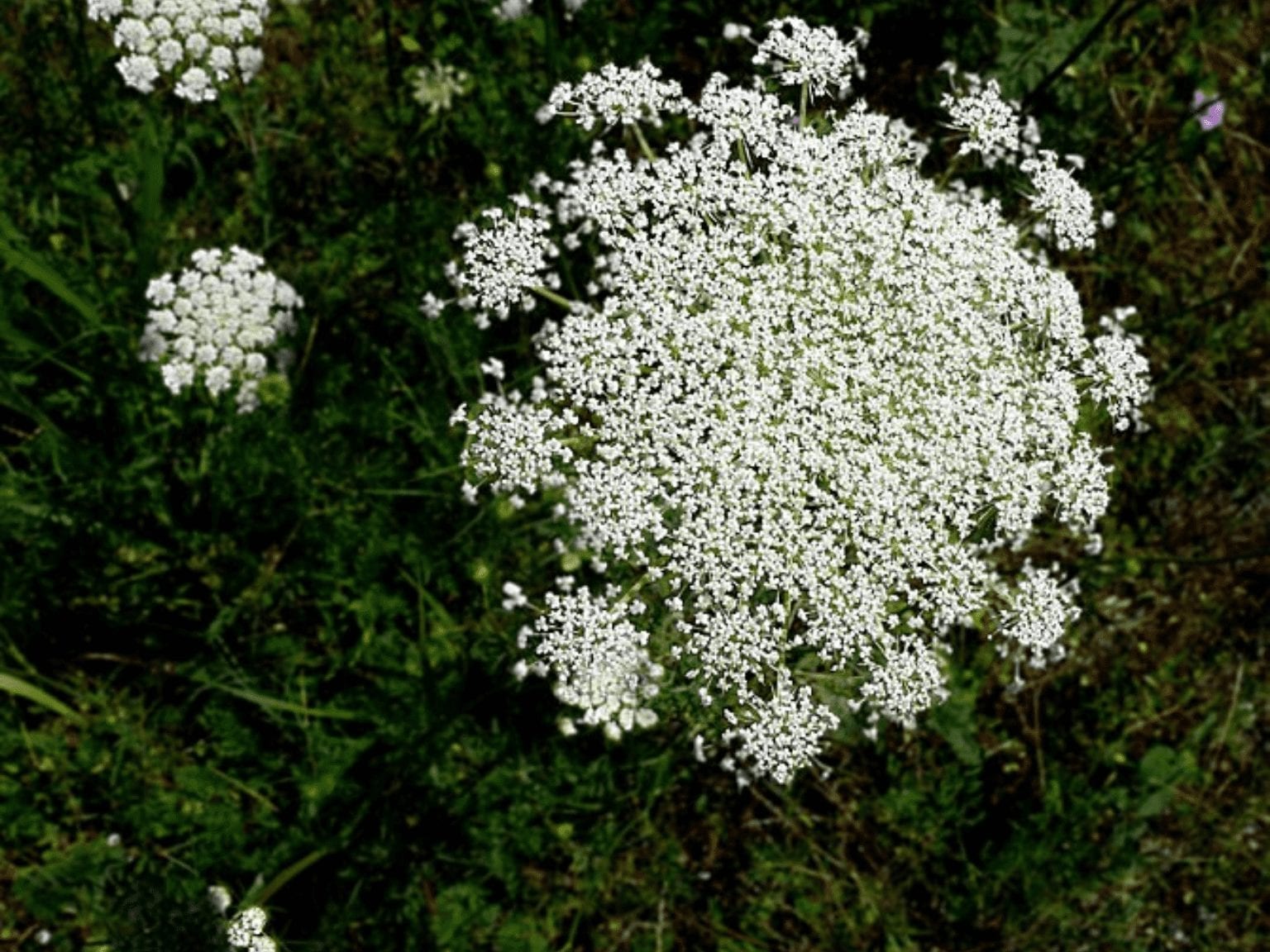
Queen Anne’s Lace (Daucus carota)
Credit: Jim Evans
Poison hemlock (Conium maculatum) is deadly poisonous. Here are some key differences between this dangerous plant and yarrow. Whereas yarrow has a hairy stem that’s very fibrous, poison hemlock has a smooth hollow stem. Another difference is that poison hemlock’s leaf stalk clasps the stem, while on the contrary, yarrow’s leaf stalks don’t do this. Additionally, the poison hemlock flowers are in an umbel, not a corymb. Poison hemlock can also grow up to 3 meters high whereas the highest yarrow will grow is 80cm.
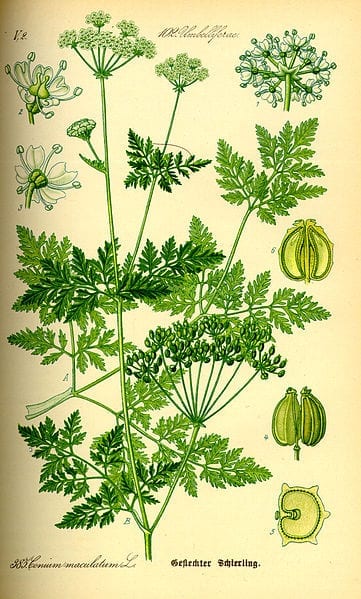
Poison hemlock (Conium maculatum)
Source: www.biolib.de
Safety Information for Yarrow
While yarrow is generally considered safe, some people do have an allergic reaction to yarrow in the form of a rash or itchy eyes, so stop using it if that’s the case. It’s not recommended you take yarrow if you are nursing or pregnant (especially in the first trimester since it stimulates the uterine muscles). Avoid using it if you’re on anticoagulation or coagulation medication. If you plan on using yarrow infused oil as varicose veins treatment, run it by your practitioner first.
Eating Yarrow
The yarrow leaves and flowers are edible, albeit bitter. You can make wild pestos, patés, tapenades, hummuses, and even cheeses with young yarrow leaves or young inflorescences. In fact, the flowers can be used to decorate your meals, too.
Yarrow’s Medicinal Properties
WARNING: This is not health advice. Make sure to read our Health Disclaimer. Always run herbal remedies by your doctor.
For most of yarrow’s medicinal uses, the flowers and flower stalks can be used. Meanwhile, the leaves are typically used for first-aid use. This medicinal plant can be made into a yarrow infused oil, a lotion, a compress, a tea, a honey, or a tincture: no matter what you choose, the medicinal constituents transfer into those solvents readily.
Yarrow infused oil is used as varicose veins treatment because yarrow is a circulatory stimulant and increases the tone of the walls of veins. In fact, the flowers and flower stalks have been used in lotions or even compresses to address issues like varicose veins, spider veins, and even hemorrhoids. The positive effects of yarrow infused oil are likely due to yarrow’s tannin, sesquiterpene and flavonoid content. When yarrow is in bloom, its concentration of volatile oils is the highest. Some of these stimulate blood flow to the skin’s surface, further helping as varicose veins treatment.
To learn more about yarrow’s many medicinal properties, sign up for the Herbal Remedies course.
Making Yarrow Infused Oil for Varicose Veins Treatment
Materials:
- Fresh yarrow (100g or less)
- Organic extra virgin olive oil
- Unrefined sea salt
- Kitchen scale
- Sterilized cutting board*
- Sterilized knife*
- 2 sterilized jars*
- Large pot
- Mason jar ring
- Sterilized nut milk bag*
- Sterilized potato ricer*
- Sterilized metallic funnels (large and small)*
- Sterilized small amber bottles*
*You can sterilize your equipment by boiling it for 10 minutes or sanitizing it with a 70% alcohol solution.
Steps:
- Let the yarrow plants dry outdoors for 6-24 hours
- Wash your hands (important)
- Weigh out 100g of yarrow
- Chop the yarrow finely on your cutting board
- Place 40g of salt in an empty jar
- Add the yarrow to the jar
- Pour the olive oil until it covers the yarrow
- Make a double boiler by placing the full yarrow jar on a Mason jar ring in a pan with water.
- Heat on low at about 50C for 3 hours, stirring regularly. Do not boil or water will get into the oil!
- Take it off the heat and strain through a nut milk bag and potato ricer into a new jar.
- Add 50 drops of vitamin E oil to preserve the oil.
- Transfer the oil with a small funnel to the small bottles. Fill to the top to minimize oxidation.
- Label the bottles: yarrow foraging location, date made, oil used
- Store the yarrow at room temperature out of the sunlight
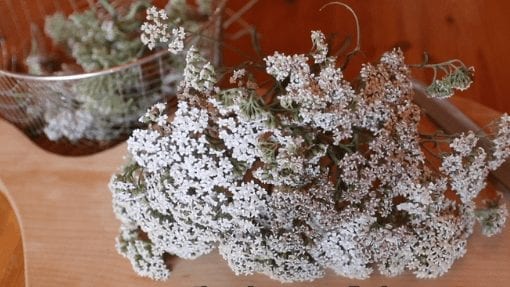
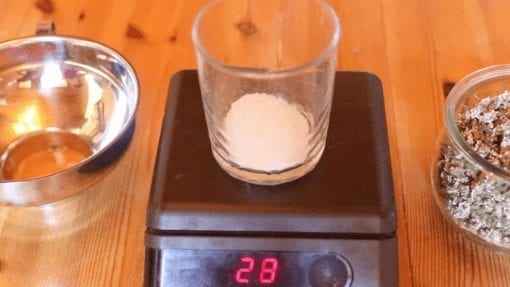
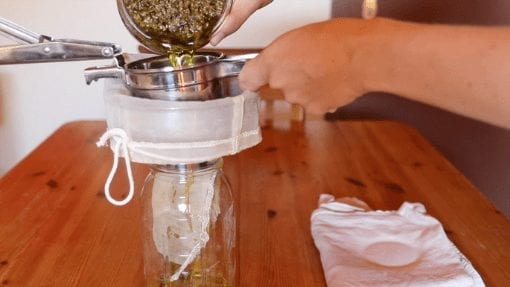
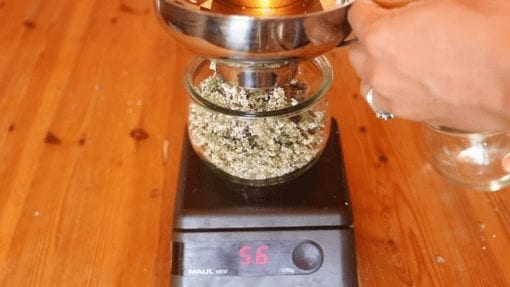
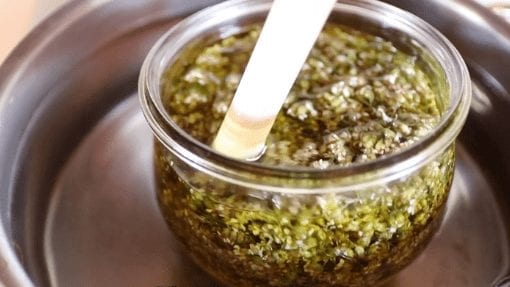
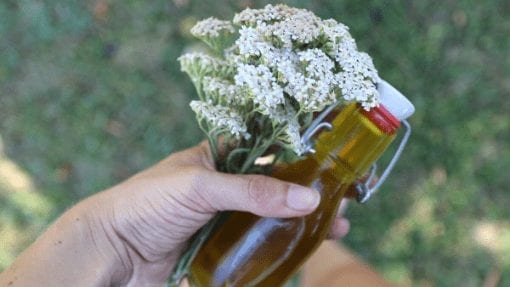
Once you’ve read our safety instructions and checked with your doctor, you can use this yarrow infused oil as varicose veins treatment and to help treat varicose veins and spider veins. Massage the oil in an upwards fashion on the affected area. Do this when you have some time on your hands since it can get a little messy.
Did you try this yarrow infused oil recipe out? Let us know how it went in the comments below!
Happy foraging!
Christelle
P.S If you loved this post, you’ll also love our other foraging posts on elderflowers, elderberry, plantain, purple dead nettle, red clover, dandelion and horse chestnuts, English ivy, Chicken of the Woods, and grape leaves.
By commenting you accept our Privacy Policy.






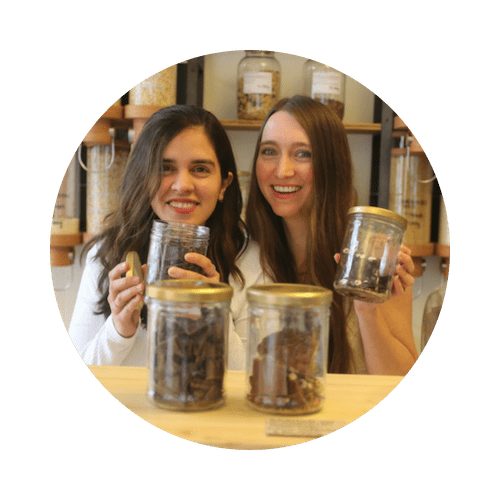
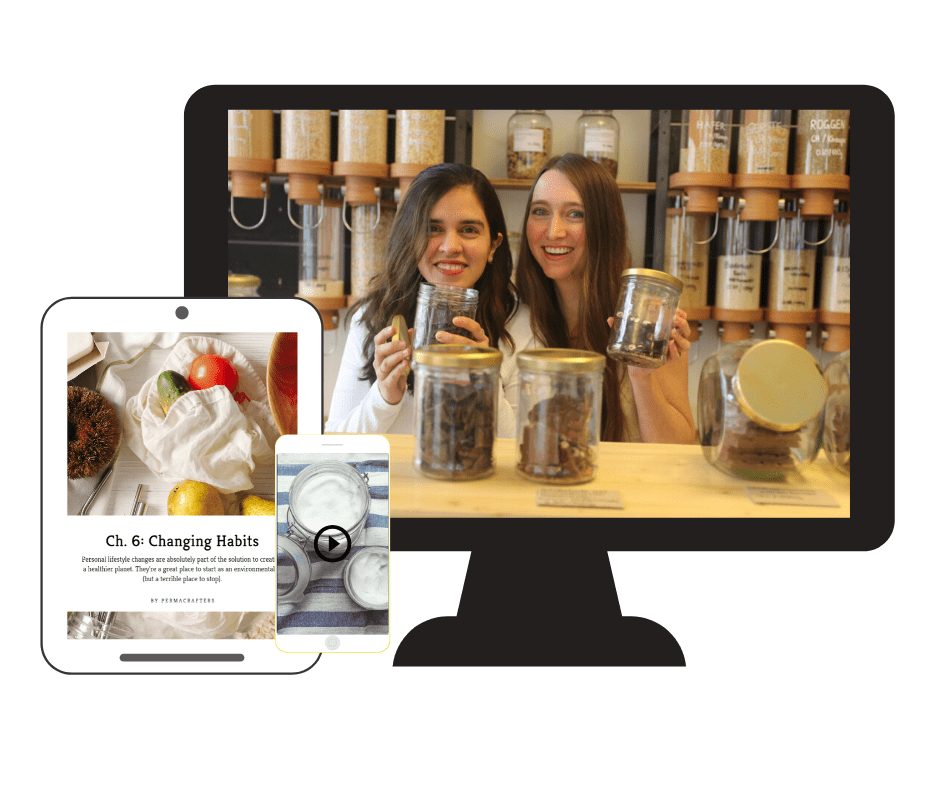
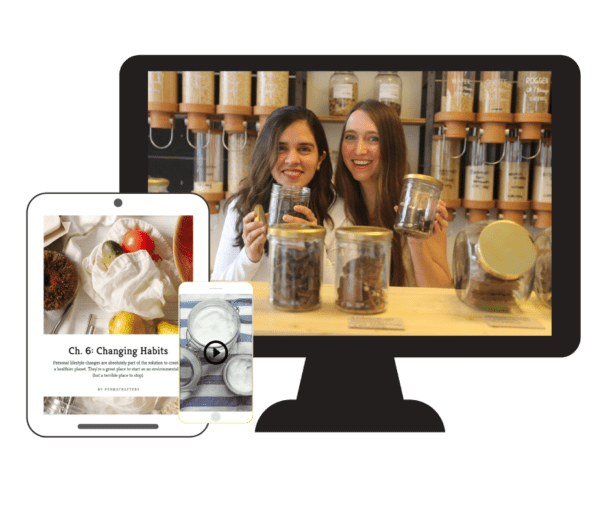
This looks like a great recipe. I wonder, when you say dry the yarrow plants, do you mean the flowers, the leaves or both? Also, why do you use salt?
Hi Taunia,
In this case, it’s the flowers and the flower stalks. The salt will absorb some of the remaining water in the yarrow. Since it’s not oil soluble, there won’t be any salt in the finished product.